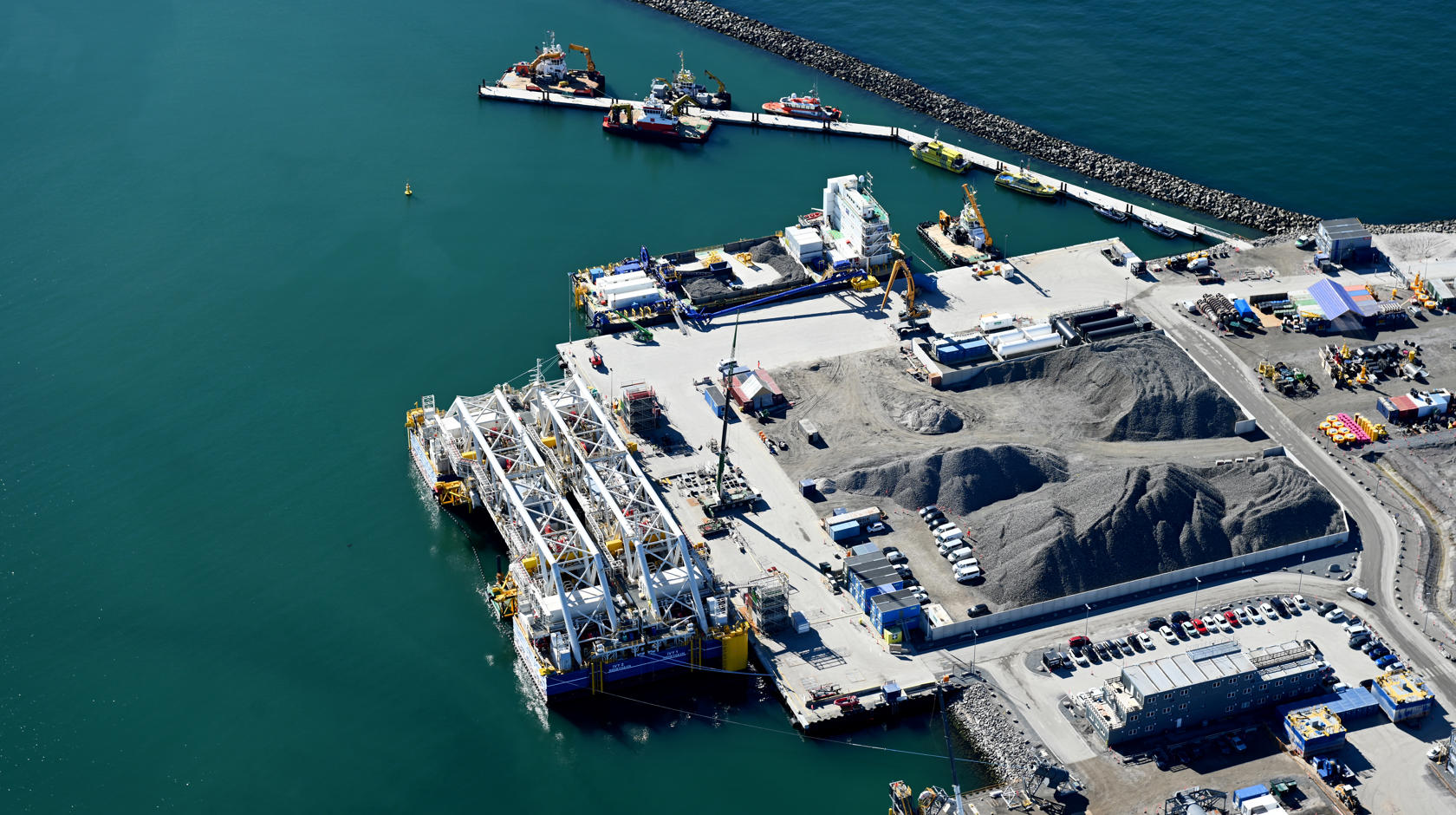Challenges with the special vessel IVY have significantly delayed the construction of the Fehmarnbelt tunnel between Denmark and Germany. The 18-kilometre-long immersed tunnel is being constructed using concrete elements, each standard element weighing 73,500 tonnes and measuring 217 metres in length, which are immersed and assembled on the seabed.
These elements are substantially heavier and larger than those used in the construction of the Øresund tunnel, which is also an immersed tunnel. The Øresund tunnel, a part of the Øresund link connecting Denmark and Sweden, serves as an important model for the construction of the Fehmarnbelt tunnel. However, the significantly larger scale and increased complexity of the Fehmarnbelt project introduce unique challenges. For example , the work is taking place at an average water depth of 30 metres in the Fehmarnbelt, which is twice the depth of the Øresund, necessitating the use of a highly advanced and unique vessel equipped with complex mechanical and electronic systems.
The specially designed vessel has yet to undergo full testing and receive approval from the relevant authorities, resulting in a delay of 1.5 years in its preparation. Given the current setback with IVY, completing the tunnel within the original timeline is now deemed challenging.
"The Fehmarnbelt tunnel is the world's longest immersed tunnel. It is a mega-project and with that come inevitable challenges and unpredictable events. IVY is a prototype that has been specially built for us, and it has taken more time than anticipated," says Mikkel Hemmingsen, CEO of Sund & Bælt, the client for the project.
More challenges
It remains uncertain how much of the lost time can be recovered in the coming years.
When the construction contracts were signed in 2016, the German plan approval for the project had not yet been granted. As a result, specific requirements, such as restrictions on noise emissions from work vessels, could not be incorporated into the contracts. This may make it difficult to accelerate the construction process at a later stage.
“The contracts are nearly 10 years old and were signed before both Covid-19 and the war in Ukraine occurred, and before we knew the scope of the German authorities' conditions,” says Mikkel Hemmingsen.
Sund & Bælt is in ongoing dialogue with the German authorities to find practical solutions for meeting the requirements related to underwater noise and sediment spill in German waters. In addition, parts of the tunnel trench still need to be levelled with gravel, as supplementary geotechnical surveys have shown that parts of the tunnel trench are around 30 cm deeper than planned.
The second part of the project, the Danish railway facilities for the Fehmarnbelt tunnel, consisting of around 110 km of new double-track railway from Ringsted to Rødby, is on schedule.
The overall project will continue to be implemented as a user-paid facility, as stipulated in the Danish Construction Act.

